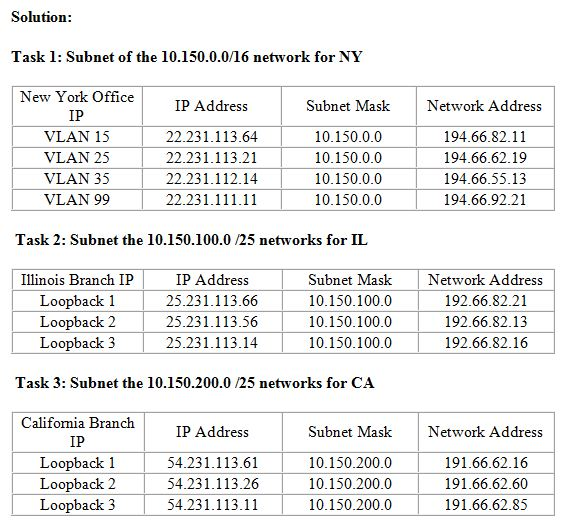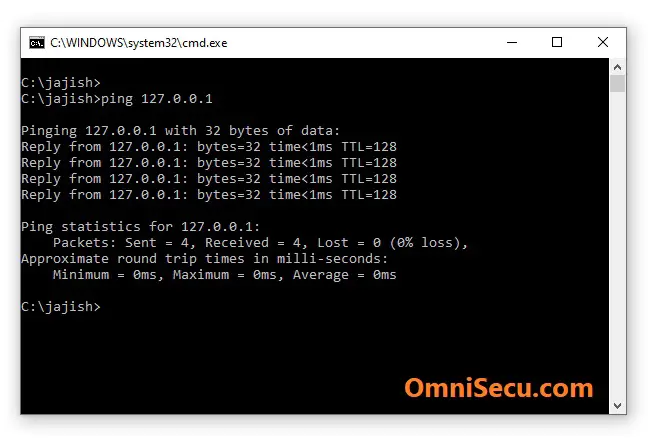

Up to thirty-two IP addresses are supported on a loopback interface. You can configure multiple IP addresses on a loopback interface ( lo0 to lo7). In the same way, if you configure a loopback interface ( lo1) with IP address 172.16.101.8, you cannot configure another loopback interface ( lo2) with IP address 172.16.101.8. This means that the address cannot be used by a VLAN interface or another loopback interface.įor example, if you configure a VLAN with IP address 172.16.100.8/24, you cannot configure a loopback interface with IP address 172.16.100.8. The maximum number of IP addresses supported on a switch is 2048, which includes all IP addresses configured for both VLANs and loopback interfaces (except for the default loopback IP address 127.0.0.1).Įach IP address that you configure on a loopback interface must be unique in the switch. Loopback interfaces share the same IP address space with VLAN configurations. With all of this in mind, the loopback address is a simple but critical part of the network engineer’s toolkit.You can configure a loopback interface only from the CLI you cannot configure a loopback interface from the WebAgent or Menu interface. Users can also implement stateless firewall filters in a loopback interface and loopback address use case. It's a universal and constant part of the availability of systems to evaluate their connections. Even in various sorts of system failures or network downtime, the loopback interface is still in place, allowing engineers to verify whether a given device connection is solvent or not.Īnother key benefit is that the loopback address never changes depending on IP setups. One of the biggest benefits of using the loopback address is that it is “always up” and available. The benefits of using a loopback address to ping a given network device are useful in understanding how this kind of implementation works. Host’s self-address, also known as localhost address, is a unique address assigned to them by the host. 255 255 In loopback, 255 is reserved for this purpose. The standard domain name for the address is localhost.” Benefits of Using a Loopback Address What Is The Loopback Range IP addresses range from 127 to 128 in loopback IP addresses. The most commonly used IP address on the loopback network is 127.0.0.1 for IPv4 and ::1 for IPv6. Any traffic that a computer program sends on the loopback network is addressed to the same computer. Juniper Networks describes some of the corresponding change this way: “Most IP implementations support a loopback interface (lo0) to represent the loopback facility. The same convention is defined for computers that support IPv6 addressing using the connotation of 1. The address is used to establish an IP connection to the same machine or computer being used by the end-user. The syntax of the new loopback address in IPv6 is simpler: it's ::1. 0.1 is the loopback Internet protocol (IP) address also referred to as the localhost.

In the old IPv4 system, the loopback address was 127.0. In recent years, the Internet Protocol system has been retrenched to allow for a greater number of IP addresses. Syntax: interface loopback num The num parameter specifies the virtual interface number.

device (config-bgp-router) exit device (config) interface loopback 1 device (config-lbif-1) ip address 10.0.0.1/24. The loopback address also looks different in IPv4 than it does in IPv6. To add a loopback interface, enter commands such as those shown in the following example. Different Loopback Addresses for IPv4 and IPv6 Domain Addressing Systems The autonomous system, as its own internal network, has its own protocols, to which a loopback address test can be a remedy for certain problems with network verification. The loopback address is also useful in Border Gateway Protocol scenarios that connect routers through inter-domain routing between autonomous systems. Other kinds of testing look at how routers are set up and how they talk to each other, and what can be done to evaluate the functionality of a specific part of a network. For example, a paperclip test will utilize terminal emulator application methodology to verify some type of network connectivity. The loopback interface refers to the overall system by which network engineers can self-reference a device, or “ping” a device by sending its data packets back to itself.Ī loopback interface helps to solve some router problems and implement some kinds of testing. The loopback address is a vital component of what IT experts call a loopback interface. Techopedia Explains Loopback Address The Loopback Interface


 0 kommentar(er)
0 kommentar(er)
